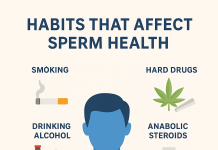There is no life stage that is immune to diabetes. Yes, not only the middle-aged and elderly, but also children, youths and pregnant women can have diabetes too. Therefore, in keeping with the global theme for World Diabetes Day 2025, “Diabetes Across Life Stages,” this post will look at diabetes in every stage of life—its impact and how to control it in each situation. Let’s start with the young.

Childhood
Usually when children have diabetes, it is because they are not making enough insulin. This condition is type 1 diabetes. But as childhood obesity skyrockets globally, we increasingly see children develop type 2 diabetes, which is due to poor bodily response to insulin.
Impact
Both types place children at risk of complications such as kidney failure, blindness, diabetic ketoacidosis, and hypoglycaemia (low blood sugar). Hypoglycaemia is particularly a problem in T1DM. Because their pancreas cannot produce or regulate insulin, they rely on external insulin. Sometimes the dose may be more than the body needs at that moment, leading to dangerously low blood sugar. If prolonged, this can cause permanent brain damage or even death.Children may also experience delayed puberty. The risk of depression and low self-esteem is higher because they must live a lifestyle very different from their peers.
Caring for a Child with Diabetes
- Parent and child education: You as the parent must learn as much as possible about diabetes, insulin, carb counting and recognising hypoglycaemia. There are simple resources to help you learn. You should also teach your child what diabetes means and why he has to live a bit differently from other children.
- Involve the school: Inform the teachers and principal so they can offer support, link your child with peer groups and act promptly in emergencies.
- Wear a medical bracelet: Your child should wear a bracelet or other form of identification stating their diagnosis of type 1 diabetes. This helps rescuers know the right care to provide.
- Glucose support: Your child should always carry something to raise blood sugar quickly if hypoglycaemia occurs—a sachet of glucose, a bottle of Coke, or glucagon injections.
- Blood sugar monitoring: Check your child’s blood sugar on waking, before meals and at bedtime. For vigorous exercise, check before, during and after, because activity increases the risk of hypoglycaemia. While classic pin-prick glucometers are still helpful, a continuous glucose monitor (CGM), if affordable, offers real-time readings and stores data without drawing blood. Whatever device you use, be intentional about monitoring and recording.
Adolescents
Most adolescents who have diabetes have type 1 diabetes. Type 2 diabetes in overweight or obese young people usually begins in adolescence.
Impact
As in children, complications can progress rapidly. Adolescents are in a phase of striving for independence and may struggle with maintaining a lifestyle of caution and discipline. The transition from seeing a paediatric endocrinologist to an adult endocrinologist, if poorly managed, may prove turbulent.Because of their changing biology, adolescents often face situations that increase their risk of hypoglycaemia—vigorous exercise and, for girls, menstrual periods. The risk of depression is also high due to emotional volatility.
Caring for Adolescents with Diabetes
Caring for adolescents will involve continuing most of what was detailed for children. In addition:
- Teach them healthy food choices and proper food portions.
- Train them on accurate insulin dosage and correct injection technique.
- Support them in taking more responsibility for their care while still offering supervision.
Conclusion
We’ve learned about diabetes in the early stages of life. Watch out for our next post on how to care for diabetes in life’s later stages.









